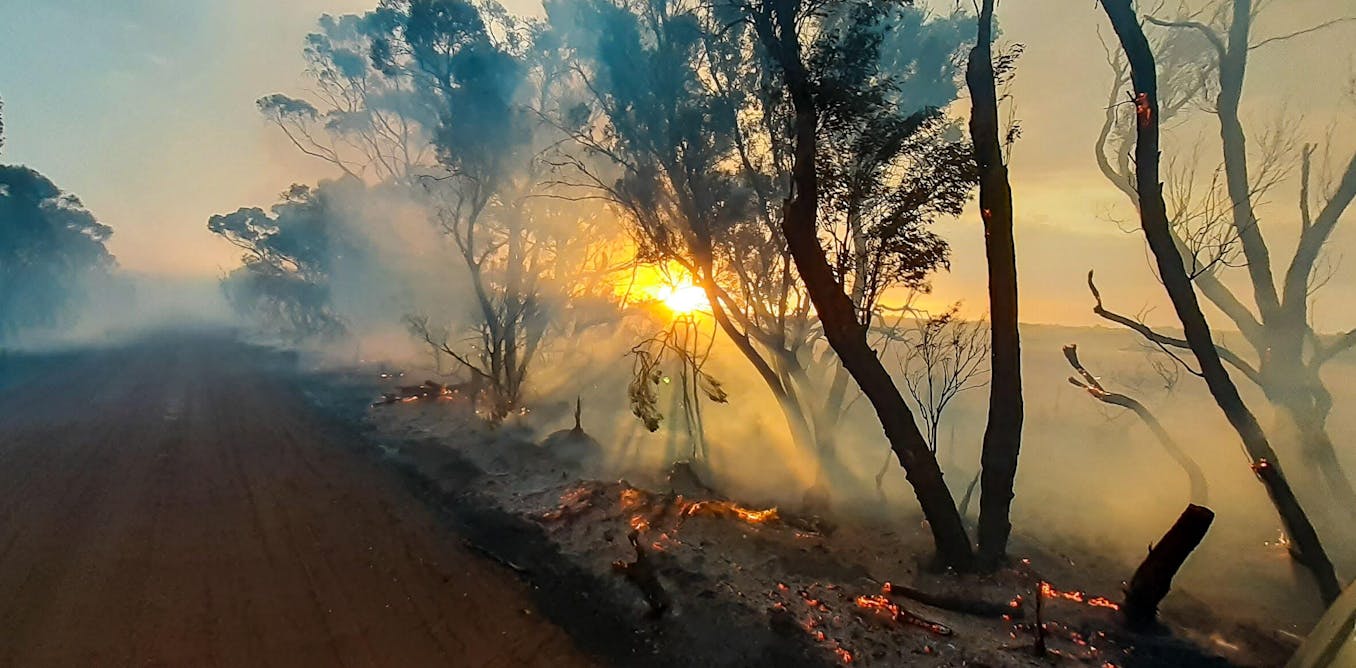Past Compliance: Enhancing Home Safety with a Detailed BAL Report
Wiki Article
The Significance of Bushfire Monitoring in Fire Protection
In the realm of fire security, the significance of efficient bushfire monitoring can not be underrated. As neighborhoods globally come to grips with raising instances of wildfires, the positive strategy to avoid and reducing these all-natural catastrophes via critical bushfire management techniques has actually become an important component. Beyond the immediate threat to human life and residential or commercial property, the interaction in between bushfire administration and ecological preservation, area participation, and climate adjustment poses complex challenges that demand detailed remedies.Significance of Proactive Bushfire Avoidance
Aggressive bushfire avoidance approaches are important in minimizing the ravaging influences of wildfires on ecosystems and areas. One essential element of aggressive bushfire avoidance is gas management.Furthermore, producing firebreaks - gotten rid of locations where greenery is strategically gotten rid of to produce a barrier to slow or stop the development of a bushfire - is one more crucial proactive procedure. By executing these methods, the spread of wildfires can be restricted, securing both human lives and the setting. Additionally, enlightening the general public on fire security practices and advertising neighborhood awareness regarding the relevance of bushfire avoidance are essential components of positive methods. Eventually, proactive bushfire avoidance plays a considerable duty in safeguarding neighborhoods and communities from the devastating impacts of wildfires.
Duty of Neighborhood Involvement in Fire Protection
Engaging the neighborhood in fire security efforts is important to enhancing the efficiency of positive bushfire prevention strategies. Community involvement plays a crucial role in cultivating a cumulative understanding of the dangers positioned by bushfires and the significance of readiness actions. By including regional residents, authorities can distribute essential details ablaze safety methods, emptying procedures, and very early warning systems, encouraging individuals to take aggressive actions to guard their residential properties and lives.By promoting a society of preparedness and cooperation, areas can strengthen their capacity to react successfully to bushfire emergency situations, lessening the influence on residential or commercial properties and lives. Eventually, area involvement is a cornerstone of detailed fire security techniques, highlighting the value of cumulative activity in guarding prone areas from the risk of bushfires.
Importance of Wild Animals Preservation in Bushfire Monitoring
Preservation of wildlife plays an important duty in efficient bushfire administration approaches, guaranteeing the protection of varied ecological communities and biodiversity in fire-prone areas. Wildlife preservation is crucial as it adds to the general resilience of environments, aiding in their capacity to withstand and recuperate from the effect of bushfires. By saving environments and safeguarding different varieties, the all-natural balance within these environments is preserved, which is important for their lasting health and wellness and sustainability.Additionally, wild animals conservation likewise helps in reducing the risk and strength of bushfires. Healthy communities with well-preserved wild animals populations can act as all-natural firebreaks, decreasing the spread of fires and restricting their damaging capacity (Bushfire Risk). Specific animal types, like delving animals or birds that spread out seeds, play distinct duties in protecting against fires or helping in the post-fire regrowth of environments
Integrating wild animals conservation right into bushfire monitoring strategies is not just essential for safeguarding biodiversity but additionally for advertising the overall wellness and resilience of communities when faced with boosting fire threats.
Advantages of Strategic Fuel Decrease Programs
Strategically implementing fuel decrease programs is important in minimizing the danger and impact of bushfires in fire-prone regions. These programs include controlled burning, mechanical clearing up, and various other methods to decrease the amount of flammable plant life readily available to fuel wildfires. By strategically decreasing gas tons in vital areas, such as close to household neighborhoods or vital facilities, the intensity and spread of bushfires can be substantially decreased.Among the primary advantages of gas decrease programs is the enhancement of overall fire durability in a community. By producing tactical fuel breaks and minimizing the connection of greenery, these programs help to disrupt the path of a bushfire, making it much easier for firemens to snuff out the blaze and include. Furthermore, gas decrease programs can protect biodiversity by preventing excessively intense fires that can devastate environments and threaten wild animals populaces.
In addition, these programs can likewise secure human lives and home by reducing the risk of catastrophic fires that present a significant danger to areas. Ultimately, critical fuel reduction programs play a critical function in aggressive bushfire monitoring and promoting a safer environment for both individuals and nature.
Impact of Environment Change on Bushfire Risk

Greater temperature levels lead to drier plant life, making it much more at risk to ignition. Reduced rains in certain areas lengthens drought problems, better raising the flammability of the landscape. Additionally, the changing climate has actually changed wind patterns and climatic problems, bring about more unpredictable fire habits and quick fire spread.
As the environment remains to change, the regularity and strength of bushfires are anticipated to rise, requiring a positive and adaptive technique to bushfire monitoring. Approaches need to progress to make up the changing threat landscape, including environment forecasts and considering long-term resilience in fire management planning. Attending to the effect of environment adjustment on bushfire threat is essential in creating effective techniques to protect lives, home, and the setting.
Conclusion
In verdict, aggressive bushfire avoidance, area interaction, wildlife preservation, tactical fuel decrease programs, and consideration of climate change are crucial components in efficient fire security. By applying these strategies, we can better manage bushfire threats and BMP shield both human lives and the setting. Bushfire Risk. It is necessary that stakeholders collaborate to prioritize these steps to reduce the devastating influence of bushfires on ecological communities and neighborhoods

As the climate continues to transform, the frequency and strength of bushfires are anticipated to rise, demanding a adaptive and aggressive approach to bushfire management.In final thought, positive bushfire prevention, neighborhood involvement, wildlife conservation, tactical fuel decrease programs, and factor to consider of climate modification are critical parts in effective fire defense.
Report this wiki page